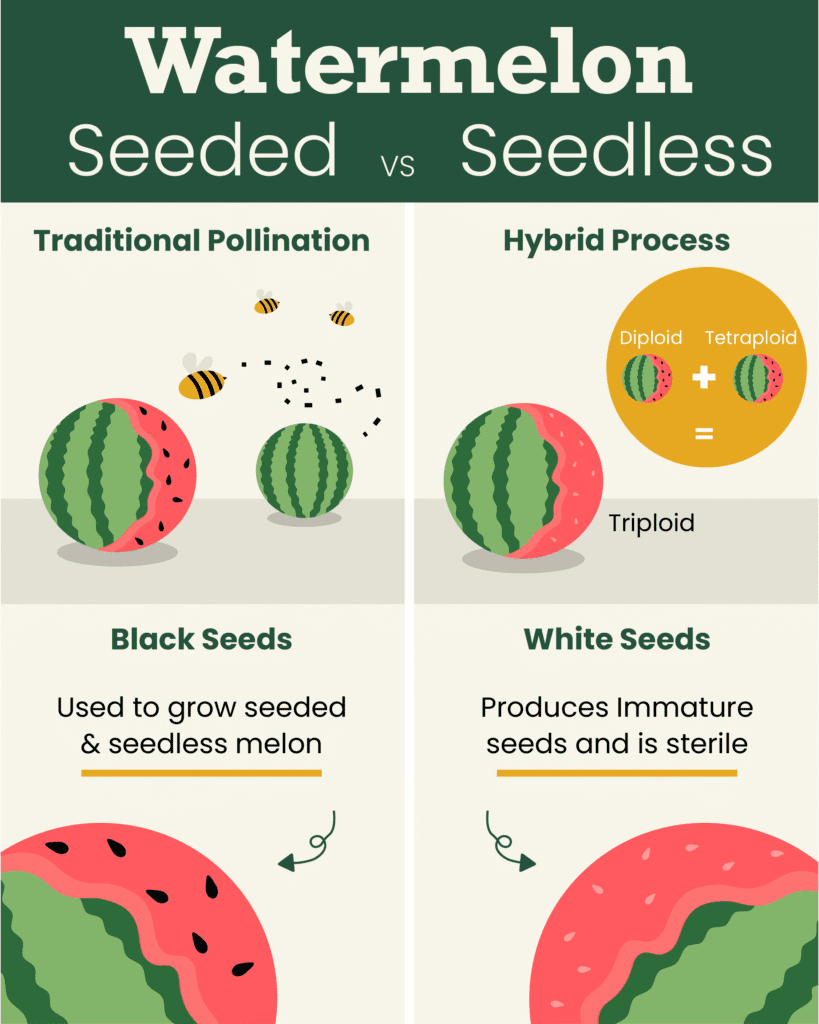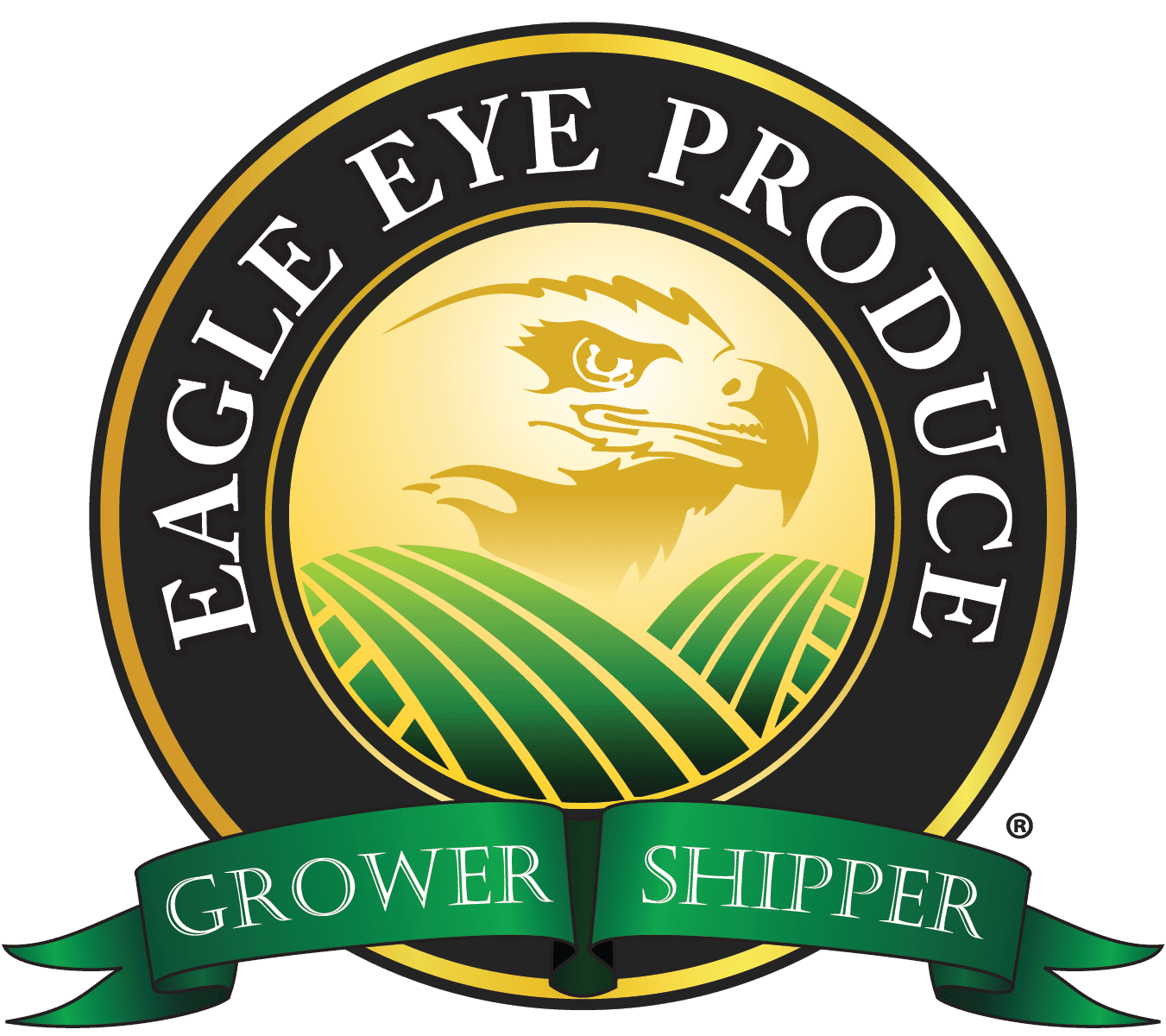Seeded vs Seedless Watermelon: What’s the Real Difference?
When it comes to picking the perfect watermelon, one question always seems to pop up: seeded vs seedless watermelon? While both offer the sweet, refreshing flavor we all love, there are a few key differences that might influence your choice—from taste and texture to how they’re grown. In this post, we’ll break down what really sets seeded and seedless watermelons apart, so you can make the best pick for your plate this season.

Seeded Watermelon
Traditional Pollination
Seeded watermelons rely on natural pollination to develop fruit—specifically, through the help of pollinators like bees. Each watermelon plant produces both male and female flowers, but only the female flowers can grow into fruit. The male flowers produce pollen, which bees transfer to the female flowers as they move from bloom to bloom.
This cross-pollination process is essential. Without it, the female flowers won’t be fertilized, and the fruit won’t form. Once pollinated, the female flower begins to grow into a watermelon, complete with mature seeds.
Because seeded watermelons require pollination to set fruit and develop seeds, ensuring a healthy bee population and strong flower activity in the field is a critical part of growing a successful crop.
Black Seeds
The black seeds found in traditional seeded watermelons aren’t just a sign of ripeness—they’re also the foundation of watermelon production. These seeds come from diploid watermelon plants, the standard, naturally occurring type that has two sets of chromosomes.
In watermelon farming, these diploid plants with black seeds serve a crucial role: they’re used as pollen donors in fields growing both seeded and seedless (triploid) watermelons.
Seedless Watermelon
Hybrid Process
Seedless watermelons may seem like magic—but they’re the result of a fascinating hybrid breeding process and careful field management! The concept of creating seedless watermelons was pioneered by Japanese scientist Professor H. Kihara in the late 1930s and early 1940s, laying the groundwork for what would become a consumer favorite. Here’s how it works: To produce seedless watermelons, growers use a hybrid process that crosses two types of watermelon plants:
- Tetraploid plants (with 4 sets of chromosomes)
- Diploid plants (with the normal 2 sets of chromosomes)
When a tetraploid and a diploid plant are cross-pollinated, the result is a triploid plant—a hybrid with 3 sets of chromosomes. This triploid plant can’t produce viable seeds, which is why the watermelon it grows are seedless.
White Seeds
Even though they’re called “seedless,” seedless watermelons often contain small, white seed-like structures. These aren’t fully developed seeds. Instead, they are immature, undeveloped versions of what would be black seeds in a traditional watermelon.
Seedless watermelons come from triploid plants, which are sterile due to having three sets of chromosomes. Because of this, they can’t produce mature, viable seeds. However, when these plants are pollinated—usually with the help of diploid pollinizer plants—they still go through part of the seed development process. The result is soft, pale seeds that never fully form.
These white seeds are completely edible and soft enough that most people don’t even notice them while eating. They are considered harmless and meet USDA standards for “seedless,” as the classification allows for a few underdeveloped seeds as long as mature black or brown seeds are absent.
Ultimately, seedless watermelons offer the convenience of a clean, crisp bite without the hassle of spitting seeds, which is a big reason they’ve become the preferred choice for many consumers.
Watermelon Working Together
While seeded vs seedless watermelon may seem like two separate options at the store, they actually work together in the field. Farmers commonly plant seeded (diploid) watermelons alongside seedless (triploid) varieties to serve as pollinizers. Since seedless plants are sterile and can’t produce viable pollen, the seeded varieties are essential for successful fruit development—even if the final crop being harvested and sold is entirely seedless. This strategic pairing allows growers to meet strong consumer demand for seedless watermelons while still relying on the natural pollination process supported by seeded plants. Together, both types play a vital role in ensuring a productive harvest and a consistent, high-quality supply from farm to table.
